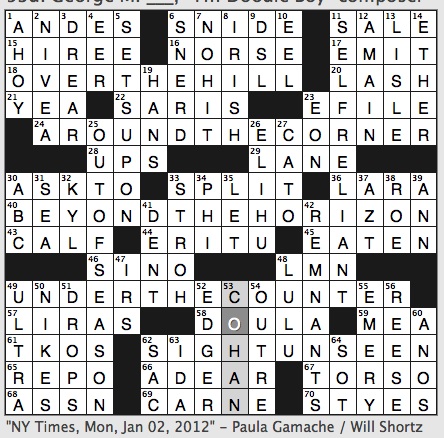The New York Times (NYT) crossword is more than a daily diversion—it’s a cultural institution that challenges minds and reflects societal values. Among its many themes, the “statesman NYT crossword“ stands out for its blend of historical reverence, political intrigue, and linguistic creativity. These puzzles invite solvers to engage with the legacies of influential leaders, decode diplomatic terminology, and unravel wordplay rooted in governance. From Winston Churchill to modern-day icons, the “statesman” clue is a gateway to explore how crosswords educate, entertain, and preserve history. This article delves into the legacy of these puzzles, their role in political discourse, and the strategies that make solving them a rewarding intellectual pursuit.
The Historical Roots of Statesmen in Crosswords
From Wartime Distraction to Intellectual Staple
The NYT crossword debuted in 1942 as a wartime morale booster, offering solace amid global turmoil 27. Early puzzles often referenced political figures and events, embedding historical context into their grids. For example, clues about Franklin D. Roosevelt or the Marshall Plan tested solvers’ knowledge and reinforced collective memory of pivotal moments 25. Over time, the crossword evolved into a platform for honoring elder statesmen—retired leaders whose wisdom continues to shape policy. A notable example is the clue “statesman,” yielding the answer ELDER, a nod to figures like Jimmy Carter or Kofi Annan, who remain active in diplomacy post-retirement 18.
Cultural Resonance of Political Figures
Crossword constructors often use politicians to anchor themes around leadership and legacy. For instance, clues like “British Prime Minister during WWII” (answer: CHURCHILL) or “Civil Rights leader” (answer: KING) connect solvers to historical narratives 25. These references are not static; they adapt to reflect contemporary leaders, such as Angela Merkel or Barack Obama, ensuring puzzles remain relevant to current events 69. By weaving these names into grids, the NYT crossword immortalizes their contributions, turning each puzzle into a micro-lesson in global governance.
Decoding Political Clues: Strategies for Solvers
Mastering Themes and Wordplay
Themed puzzles, such as the “Statesman NYT Crossword,” demand an understanding of political jargon and historical milestones. Solvers must recognize patterns—for example, answers might include:
- Titles: “Diplomat” → AMBASSADOR
- Quotes: “I have a dream” → KING
- Metaphors: “Iron Curtain speaker” → CHURCHILL 59.
Constructors often employ rebus puzzles (where squares hold multiple letters) or puns, as seen in clues like “Horse/power” (answer: COLT/VOLT) 10. Such creativity challenges solvers to think laterally, blending knowledge of politics with linguistic dexterity.
Practical Tips for Tackling Tricky Clues
- Start with Easy Entries: Fill in straightforward answers (e.g., “First U.S. President” → WASHINGTON) to unlock intersecting words 37.
- Leverage Cross-Referencing: Use known letters to deduce adjacent clues. For example, if “_ _ R” intersects with a political title, “AMBASSADOR” becomes plausible 8.
- Research Historical Context: Familiarity with treaties (e.g., “Camp David Accords”) or speeches enhances accuracy 29.
- Embrace Digital Tools: Apps like the NYT Crossword platform offer hints and archives for practice 9.
The Educational Power of Political Crosswords
Bridging Knowledge Gaps
Crosswords democratize learning by introducing solvers to overlooked figures and events. For instance, a clue about Nelson Mandela might prompt research into apartheid, while “HAZMAT SUITS” (from a 2025 puzzle) ties to Cold War-era diplomacy 109. This interplay of education and entertainment fosters a deeper appreciation for how politicians shape societies.
Cognitive and Community Benefits
Solving crosswords sharpens memory, enhances vocabulary, and delays cognitive decline 79. For political puzzles, this extends to civic literacy—understanding terms like “gerrymandering” or “filibuster” enriches public discourse 6. Additionally, online forums and tournaments (e.g., the American Crossword Puzzle Tournament) create communities where enthusiasts dissect clues and share insights, transforming solitary solving into a collective experience 79.
The Evolution of Political Crosswords in the Digital Age
From Print to Pixels
The NYT crossword’s transition to digital platforms has expanded its reach. Apps now feature interactive grids, timers, and social sharing, attracting younger audiences 79. Yet, the core appeal remains: a 2025 rebus puzzle featuring “Denver/Colorado” (answer: STAGE NAME/STATE NAME) demonstrates how technology enhances traditional wordplay 10.
AI and the Future of Puzzle Construction
Emerging tools like AI-generated clues promise to revolutionize crosswords while preserving their human touch. However, editors like Will Shortz emphasize the irreplaceable value of human creativity in crafting nuanced political references 7. Future puzzles may integrate real-time events, such as climate agreements or election results, ensuring the “statesman” theme remains dynamic.
Conclusion: A Testament to Timeless Leadership
The “statesman NYT crossword” is more than a puzzle—it’s a tribute to leadership’s enduring impact. These grids foster a nuanced understanding of governance by challenging solvers to engage with history, politics, and language. Whether unraveling a clue about Mahatma Gandhi or decoding a rebus, each answer reinforces the idea that statesmanship transcends eras. As the NYT crossword continues to evolve, its ability to educate and inspire ensures that the legacies of the world’s great leaders remain in ink—and memory.
